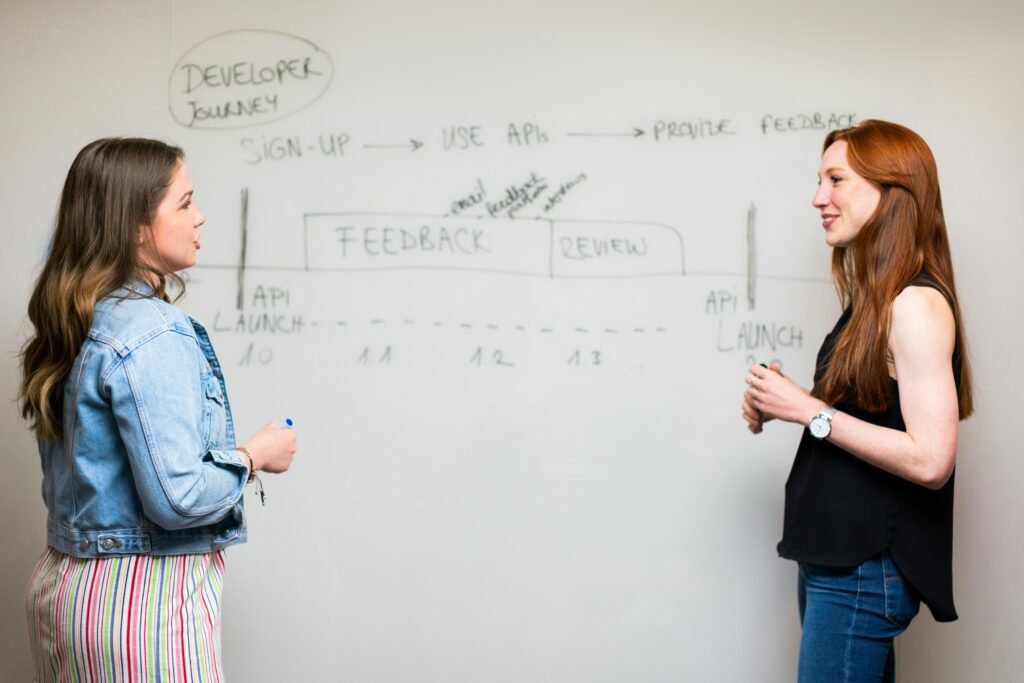
An Introduction to Ongoing Improvement
In the fast-paced world of today, the concept of “Keep Improving” is more than just a phrase; it’s a powerful philosophy that fuels personal and professional growth.
Embracing continuous improvement means committing to a lifetime of learning and development.
It’s not about chasing perfection but about striving to be better than you were yesterday.
This approach opens doors to new opportunities and helps you realize your fullest potential.
Think about the moments when you’ve felt the most accomplished.
Chances are, those moments came after a period of effort and progress.
Improvement is all about those incremental steps that lead to significant achievements over time.
Whether you’re aiming to advance your career, enhance your personal relationships, or develop new skills, adopting a mindset of continuous improvement can transform your life.
For instance, imagine you’re learning a new language.
At first, it might seem challenging and even frustrating.
But as you practice daily, those small gains add up.
You start to understand phrases, then sentences, and eventually, you can hold conversations.
This is the essence of continuous improvement: small, consistent efforts that yield substantial results.
It’s also crucial to understand that improvement is not a linear journey.
There will be setbacks and obstacles along the way. However, each challenge presents an opportunity for growth and learning.
Viewing setbacks as learning experiences rather than failures can change your perspective and keep you motivated to push forward.
Another critical aspect of ongoing improvement is self-awareness.
Understanding your strengths and weaknesses allows you to focus your efforts where they can make the most impact.
This self-awareness comes from regular reflection and assessment, helping you make informed decisions about where to direct your energy and resources.
In this journey, staying motivated and inspired is key. Surround yourself with positive influences, whether it’s through inspirational quotes, success stories, or mentors who have walked a similar path.
These sources of motivation can provide the energy and encouragement needed to keep going, even when the road gets tough.
Ultimately, the philosophy of “Keep Improving” is about embracing the process of growth and being open to the endless possibilities that come with it.
Each day offers a new chance to be better, to learn more, and to achieve your goals.
Establishing Clear Objectives

Setting clear objectives is a crucial first step on the path to continuous improvement.
Goals give you direction and purpose, transforming abstract ambitions into actionable plans.
Studies show that setting goals can significantly boost performance and motivation (over 90% of The Goal Setting Theory studies confirm this).
To harness this power, start by defining what you want to achieve in both the short and long term.
Short-term goals help you focus on immediate tasks and provide quick wins that can keep your motivation high.
For example, if you’re looking to master a new software tool, set a goal to complete an online course within a month.
This clear, attainable objective allows you to track your progress and celebrate your success once achieved.
Long-term goals, on the other hand, serve as your broader vision and ultimate destination.
These objectives might include advancing your career, becoming proficient in a new language, or even starting your own business.
Having these aspirations in mind keeps you driven and focused, providing a sense of direction for your ongoing efforts.
Entrepreneurs who define their business goals clearly tend to persist in their efforts, which often leads to greater success over time (Entrepreneurs who set clear business goals are more persistent).
An effective goal-setting strategy involves breaking down your long-term objectives into manageable steps.
This approach not only makes your goals seem less daunting but also allows you to recognize and celebrate progress along the way.
Each small achievement acts as a building block toward your larger aspirations, keeping you motivated and engaged.
It’s also essential to make your goals SMART: Specific, Measurable, Achievable, Relevant, and Time-bound.
This framework ensures that your objectives are clear and actionable, making it easier to stay on track.
For instance, instead of vaguely aiming to “get fit,” set a specific goal like “run a 5K within three months.”
Establishing clear objectives not only guides your efforts but also helps allocate your resources more efficiently.
Welcoming Constructive Feedback

Feedback plays a crucial role in self-improvement.
It provides an external perspective on your efforts and can highlight areas you might overlook.
To effectively seek constructive criticism, create an environment where feedback is welcomed and encouraged.
This might involve asking specific questions like, “What can I do better?” or “How can I improve this project?”
Applying feedback can sometimes be challenging, but remember, it is an opportunity to grow.
Approach feedback with an open mind and a willingness to learn, and you will find it becomes a valuable tool for development.
One of the most effective ways to get valuable feedback is by actively seeking it from a variety of sources.
This could include colleagues, mentors, or even friends and family.
The more perspectives you gather, the more comprehensive your understanding of your strengths and areas for improvement will be.
Constructive feedback isn’t just about identifying weaknesses; it’s also about recognizing your strengths and understanding how to leverage them.
Positive feedback can reinforce what you’re doing well and help you build on your successes.
Balancing positive and constructive criticism creates a well-rounded approach to self-improvement.
Additionally, it’s essential to respond to feedback in a proactive manner.
Instead of feeling defensive or discouraged, use the feedback to set new goals and develop action plans for improvement.
For instance, if a colleague suggests that you could improve your presentation skills, consider enrolling in a public speaking course or seeking opportunities to practice in front of smaller groups.
Creating a feedback loop can further enhance your development process.
After implementing changes based on initial feedback, seek follow-up comments to assess your progress.
This continuous cycle of receiving, applying, and reassessing feedback helps maintain a steady trajectory of improvement.
Incorporating feedback into your routine takes practice and patience, but it pays off significantly.
By remaining open to constructive criticism, you not only enhance your skills but also demonstrate a commitment to your growth and development.
This openness can foster a positive learning environment, encouraging others around you to adopt a similar approach to continuous improvement.
Acquiring New Abilities

Developing new skills is vital in your quest for continuous growth.
Whether you’re diving into a fresh language, honing your digital proficiency, or boosting your leadership capabilities, the resources at your disposal are vast and varied.
Online platforms like Coursera, Udemy, and LinkedIn Learning offer extensive courses covering countless subjects.
Additionally, books, podcasts, and webinars can be valuable sources of knowledge and inspiration.
The key to mastering new abilities lies in consistent practice and application.
For instance, if you’re aiming to improve your digital skills, set aside specific time each week to engage with relevant courses or tutorials.
This focused approach ensures that learning becomes a regular part of your routine, making it easier to track your progress and identify areas needing more attention.
Applying what you’ve learned in real-world scenarios accelerates your growth.
Suppose you’re learning a new software tool.
Try integrating it into your daily tasks or projects, even if it means starting with small, manageable portions.
This hands-on experience reinforces your learning and makes theoretical knowledge practical and useful.
It’s also beneficial to set clear, achievable milestones in your learning journey.
Breaking down your objectives into smaller, manageable steps makes the process less overwhelming and allows you to celebrate incremental successes.
For example, if your goal is to learn a new language, start by mastering basic vocabulary and phrases before progressing to more complex grammatical structures and conversations.
Seeking mentorship can further enhance your skill acquisition.
Mentors provide valuable guidance, share their experiences, and offer insights that you might not find in textbooks or online courses.
Whether through formal mentorship programs or informal relationships, having a mentor can significantly boost your confidence and provide a clearer path to mastery.
Lastly, embrace a growth mindset.
Understand that learning is a continuous process, and each challenge presents an opportunity to grow.
Be patient with yourself, stay persistent, and don’t be afraid to make mistakes—they are a natural part of learning and can provide valuable lessons.
Developing new abilities requires dedication and effort, but the rewards are substantial.
By committing to lifelong learning, you open doors to personal and professional advancements that can significantly impact your journey toward continuous improvement.
Maintaining Motivation

Motivation can be a tricky beast to tame, but it’s crucial for keeping your momentum in the continuous improvement journey.
One powerful strategy to maintain motivation is goal setting.
Employees who set goals are much more likely to feel inspired at work (Employees who set goals are 14.2 times more likely to feel inspired).
Another effective way to stay motivated is by celebrating small wins.
These minor victories provide immediate gratification and reinforce the belief that your efforts are paying off.
For instance, if you’re learning a new skill, acknowledge each milestone you reach, no matter how small it may seem.
This could be as simple as mastering a new function in a software program or completing a chapter in a book.
Maintaining a positive mindset is also vital.
Surround yourself with positive influences, whether it’s through inspirational quotes, motivational videos, or stories of successful individuals.
This positivity can act as a buffer against setbacks and challenges, helping you to stay focused on your goals.
Seeking inspiration from successful individuals can also reignite your passion and drive.
Many people find that hearing about others’ achievements can serve as a powerful motivator.
For example, an athlete might stay motivated by recalling the struggles and triumphs of sports legends who have paved the way before them.
Incorporating a support system into your routine can make a significant difference as well.
Share your goals and progress with friends, family, or colleagues who can offer encouragement and hold you accountable.
This external support can provide an extra boost of motivation, especially during challenging times.
Additionally, mix up your routine to keep things interesting.
Stagnation can sap your enthusiasm, so try varying your tasks or learning new techniques to keep your activities engaging.
For instance, if you usually read books to learn, try listening to podcasts or watching instructional videos for a change of pace.
By employing these strategies, you can keep your motivation levels high and continue making strides toward your goals.
Monitoring Progress

Keeping an eye on your progress is essential to your journey of continuous improvement.
By tracking your advancements, you gain insight into what’s working and what needs adjustment.
Many companies find that using objectives and key results (OKRs) provides a clearer understanding of performance.
In fact, 98% of companies report improved clarity when using OKRs.
To monitor your progress effectively, consider utilizing various tools such as progress journals, apps, or spreadsheets.
These resources can help you organize your goals and milestones, making it easier to review your accomplishments regularly.
By keeping a detailed record, you can see patterns emerge and identify areas that may need more focus.
Regular check-ins are crucial.
Set aside specific times to review your progress and reflect on your journey.
This practice not only keeps you accountable but also allows you to celebrate your achievements, no matter how small.
Celebrating these successes provides motivation and reinforces the belief that your efforts are yielding results.
Feedback loops play a vital role in progress monitoring.
After making changes based on initial feedback, seek follow-up comments to evaluate your development.
This continuous cycle of receiving, applying, and reassessing feedback ensures you stay on the right path.
Don’t forget to be flexible.
If you find that a particular strategy isn’t as effective as you hoped, be willing to adjust your approach.
Adaptability is key to overcoming challenges and seizing new opportunities.
For instance, if tracking your progress via an app isn’t working, switch to a journal or spreadsheet that suits your style better.
By employing these techniques, you can maintain a clear view of your progress and stay motivated on your journey of continuous improvement.
Adjusting to Change

Life is full of unexpected twists and turns, and being able to adjust your approach is crucial for ongoing progress.
When you encounter changes, whether they’re minor shifts or major upheavals, your ability to adapt can make all the difference.
Flexibility means reevaluating your plans and being open to alternative paths that can lead to success.
For instance, if your goal to enhance your public speaking skills isn’t yielding the desired results through online courses, try joining a local speaking group where you can practice in a supportive environment.
Embracing change also involves a proactive mindset.
Instead of resisting new circumstances, look at them as opportunities to learn and grow.
This perspective shift can transform challenges into stepping stones.
Say you’ve been working on a particular project for months, and suddenly the scope changes.
Rather than seeing it as a setback, view it as a chance to broaden your skills and tackle new aspects of the project.
Another key aspect of adjusting to change is maintaining a strong support network.
Surround yourself with individuals who can offer advice, encouragement, and fresh perspectives.
Their input can be invaluable when navigating through unfamiliar territory.
For example, if you’re transitioning to a new role at work, seek guidance from colleagues who have successfully made similar transitions.
Their insights can provide clarity and confidence as you adapt to your new responsibilities.
Staying adaptable also requires continuous self-assessment.
Regularly review your goals and strategies to ensure they remain relevant in light of new developments.
This ongoing evaluation helps you stay aligned with your objectives while being flexible enough to pivot when necessary.
If your original plan to gain a new certification becomes unfeasible due to time constraints, explore other certifications or training programs that align with your long-term goals.
In essence, adjusting to change is about staying resilient, open-minded, and proactive.
By embracing new circumstances and seeking out opportunities within them, you can continue to make strides toward your goals, regardless of the challenges you face.
Recap and Future Directions

Throughout this journey of continuous improvement, we’ve explored essential strategies to keep you moving forward.
Establishing clear objectives helps you stay focused and driven.
Welcoming constructive feedback offers valuable insights for growth.
Acquiring new abilities through dedicated learning ensures you remain adaptable and competitive.
Maintaining motivation through small wins and positive influences fuels your progress.
Monitoring your progress keeps you accountable and allows for necessary adjustments.
Embracing change with a flexible mindset transforms challenges into opportunities.
As you continue on this path, remember that improvement is a lifelong commitment.
Every effort, no matter how small, contributes to your overall growth.
Stay patient, remain persistent, and celebrate your achievements along the way.
The pursuit of excellence is a rewarding endeavor, filled with learning and development.
Keep improving, and let every step you take be a testament to your dedication and passion for growth.
Stay inspired, stay motivated, and continue striving for success in all areas of your life.
Your journey of continuous improvement is just beginning, and the possibilities are endless.
